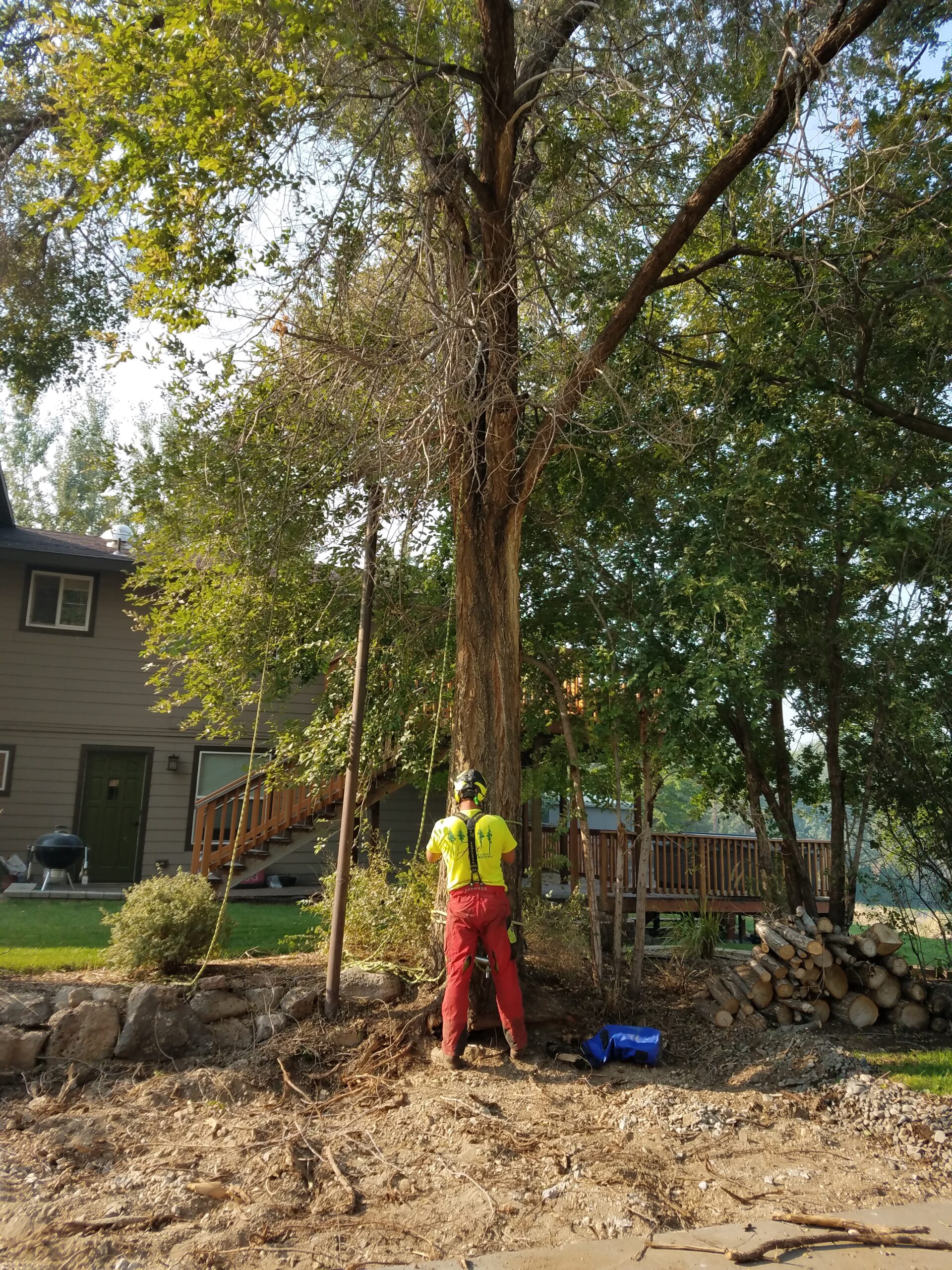What Does That Mean? Edition #2: Target
When you hear the word “Target” you typically think of something you aim AT right? Well, arboriculture laughs in the face of the Webster dictionary, when you hear an arborist use the word target they are referring to something to be avoided. Probably what more traditionally people would think of as an obstacle.
Examples of Targets:
– Other trees, plants, flowers, or landscaping in the drop-zone
– Fencing and gates
– Pergolas, decks, porches, sheds
– Gutters, roofs, tv antennas/satellite dishes
– Septic tanks, leech fields, underground utilities, powerlines
Each target and its proximity to the tree to be removed or pruned will affect how the project is handled. If there are large limbs hanging over a target then it may require rigging or speed lining (basically zip lining limbs, it’s fun!). Small shrubs, bushes, or flowers that may be in danger of having limbs hit them will get covered with a large trash can to essentially armor them. Narrow gates will get protected with canvas drop clothes to prevent scratching or damaging the wood. Septic systems and underground utilities will effect where any large limbs or primary stems can be dropped due to their weight and velocity when they hit the ground. Powerlines can directly affect our ability to perform a job. Trees within certain proximity can’t be touched without highly specialized training and licensing. When there are multiple types of targets at play, such as close proximity to a structure and a large number of targets in the drop zone, it will require a crane to accomplish the job in the most efficient and safe manner not only for our team, but also for your home and property. The more complex the area we are working in and around, the more special steps in requires, the longer a project will take.
I hope this helped explain more of what goes into our evaluation, consideration, and estimate for your project.

